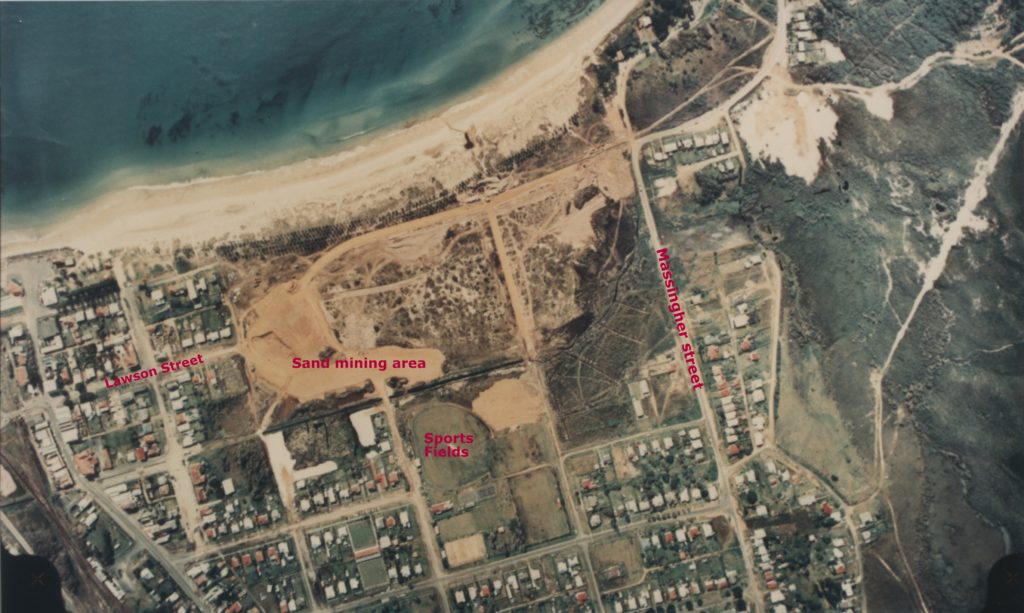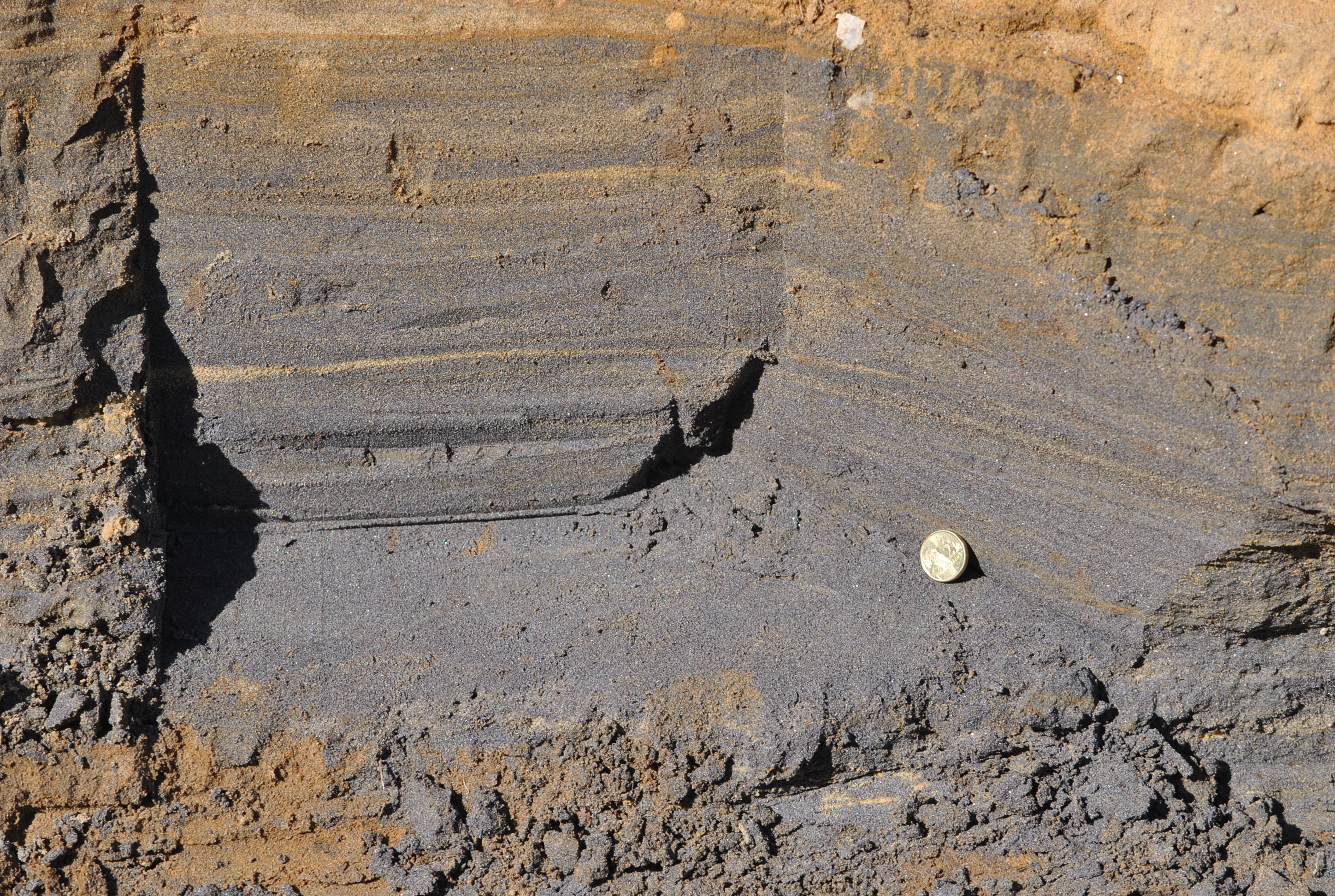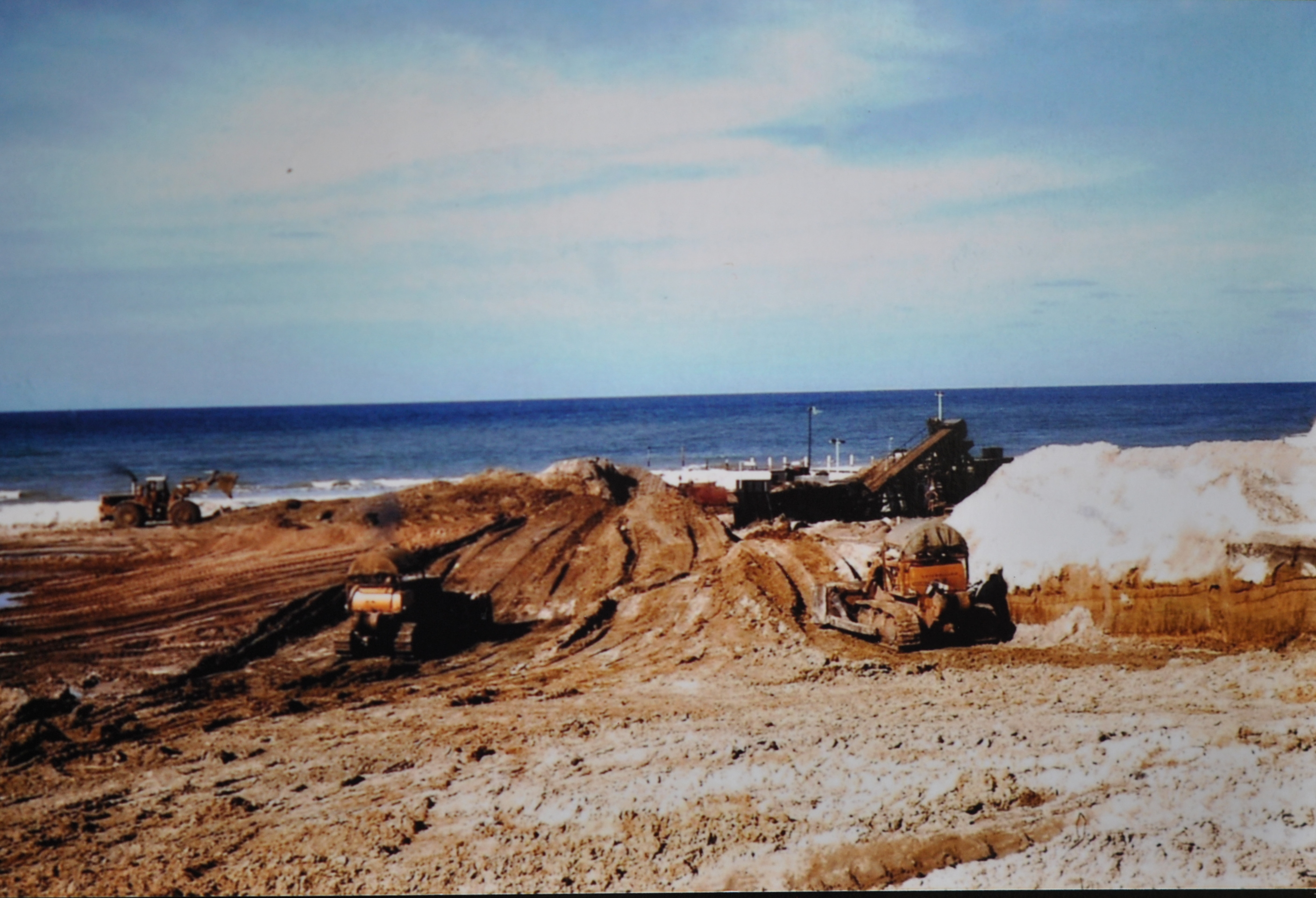Site 7: Sand Mining
PREV NEXT
If you were standing here in the mid 1960’s there was no foreshore park, walkway, Lawson Street or buildings. Dunes and swamp extended inland as far as Marvell Street and the sports fields. Only after the area was mined for rutile and zircon in 1968 was the land developed as you see it now.

In 1934 Zircon Rutile Limited (ZRL), was formed in Byron Bay. This was the first company in the world to recover zircon and rutile commercially from beach sand. Mining started in January 1935 at Seven Mile Beach. Initially “black-sanders” manually scraped, dug, concentrated and stockpiled the heavy, black sand. They were paid $4.80 for a 44-hour week, lived in tents near the beach and kept all gold, platinum and tin.

ZRL processing plant
The concentrates were transported to ZRL’s treatment plant on Jonson Street in Byron Bay. In 1943 ZRL became the first company in the world to produce separate, high-grade rutile and zircon from mineral sands. These were bagged and exported from Byron Bay to the world. The zircon was used in the foundry, ceramic and enamel industries. Rutile was used to make white pigment, for paint and plastics, and titanium metal.

Black sand “lead” containing zircon and rutile
In 1947 mining commenced on Tallow Beach at Broken Head and ended up at Cosy Corner beneath the lighthouse.
Mining moved inland, and in the 1960’s to Main and Belongil Beaches.
In 1948 floating suction dredges, which separated the heavy minerals simply and cheaply from other sandgrains, were introduced. The heavy minerals were pumped to the treatment plant. The rest of the sand remained at its source.
In 1951 ZRL began rehabilitating, reforming and replanting the mined areas; but not always with native species.
Environmental opposition to sand mining grew.

Sand Mining on Main Beach in 1967. RTRL Photo.
Mining ceased in 1968; processing in 1972. Some mined areas are now incorporated in Arakwal National Park; some are public places and some contain private houses, commercial buildings or infrastructure.
After 38 years and production of more than half a million tonnes of premium mineral sand products from its beaches and dunes worth more than $500 million today Byron Bay’s pioneering role in this industry was over.